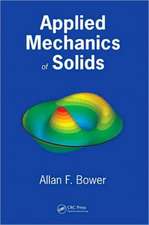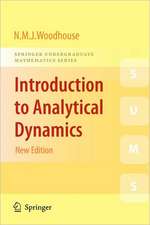Nondestructive Evaluation of Materials by Infrared Thermography
Autor Xavier P.V. Maldagueen Limba Engleză Paperback – 20 noi 2011
Preț: 385.08 lei
Nou
Puncte Express: 578
Preț estimativ în valută:
73.68€ • 76.94$ • 60.85£
73.68€ • 76.94$ • 60.85£
Carte tipărită la comandă
Livrare economică 15-29 aprilie
Preluare comenzi: 021 569.72.76
Specificații
ISBN-13: 9781447119975
ISBN-10: 1447119975
Pagini: 244
Ilustrații: XXXII, 207 p. 21 illus.
Dimensiuni: 155 x 235 x 13 mm
Greutate: 0.35 kg
Ediția:Softcover reprint of the original 1st ed. 1993
Editura: SPRINGER LONDON
Colecția Springer
Locul publicării:London, United Kingdom
ISBN-10: 1447119975
Pagini: 244
Ilustrații: XXXII, 207 p. 21 illus.
Dimensiuni: 155 x 235 x 13 mm
Greutate: 0.35 kg
Ediția:Softcover reprint of the original 1st ed. 1993
Editura: SPRINGER LONDON
Colecția Springer
Locul publicării:London, United Kingdom
Public țintă
ResearchCuprins
1 Overview of Nondestructive Evaluation (NDE) Using Infrared Thermography.- 1.1 General Considerations.- 1.2 Active and Passive Approaches in TNDE.- 1.3 New Materials.- 1.4 Detectors for Infrared Imaging.- 1.5 TNDE: Pros and Cons.- 2 Theoretical Aspects.- 2.1 Radiometry.- 2.2 Heat Transfer Modelling.- 3 Experimental Apparatus.- 3.1 Description of the System and Intended Use.- 3.2 Acquisition Process: Signal Restoration.- 3.3 System Calibration.- 4 External Thermal Stimulation: Methods and Image Processing.- 4.1 General Considerations.- 4.2 Study of Graphite Epoxy Composites: Procedures, Investigation, Processing.- 4.3 Study of Aluminium Laminates: Procedures, Investigation, Processing.- 4.4 Automatic Defect Detection.- 5 Internal Thermal Stimulation: Methods and Image Processing.- 5.1 General Considerations.- 5.2 Case Study I: Evaluation of Corrosion Damage to Pipes.- 5.3 Case Study II: Inspection of Jet Turbine Blades.- 6 Quantitative Analysis of Delaminations.- 6.1 General Considerations.- 6.2 The Inverse Problem.- 6.3 Experimental Procedure: Thermogram Processing.- 6.4 Discussion on the Quantitative Characterization Procedure.- 7 Inspection of Materials With Low Emissivity by Thermal Transfer Imaging.- 7.1 General Considerations.- 7.2 Thermal Transfer Imaging.- 7.3 Physical Behaviour of Thermal Transfer Imaging Technique.- 7.4 Experimental Results.- 8 Thermal Diffusivity Measurements of Materials.- 8.1 General Considerations.- 8.2 Classical Thermal Diffusivity Measurement Method.- 8.3 Diffusivity Measurement Method Based on the Laplace Transform.- 8.4 Diffusivity Measurement Method Based on Phase Measurement.- 9 Thermal Tomography.- 9.1 General Considerations.- 9.2 Method.- 9.3 Some Results.- 10 Thermal NDE of Nonplanar Surfaces.- 10.1 General Considerations.- 10.2 Principle of Surface Curvature Correction.- 11 Applications of Infrared Thermography to High Temperatures.- 11.1 Detection of Rolled-in Scale on Steel Sheets.- 11.2 Thermal Inspection of High Temperature Industrial Structures.- Appendix A Computer Model.- Appendix B Smoothing Routine.- Appendix C Parabola Computation.- Appendix D Higher Order Gradient Computation Based on the Roberts Gradient.- References.










